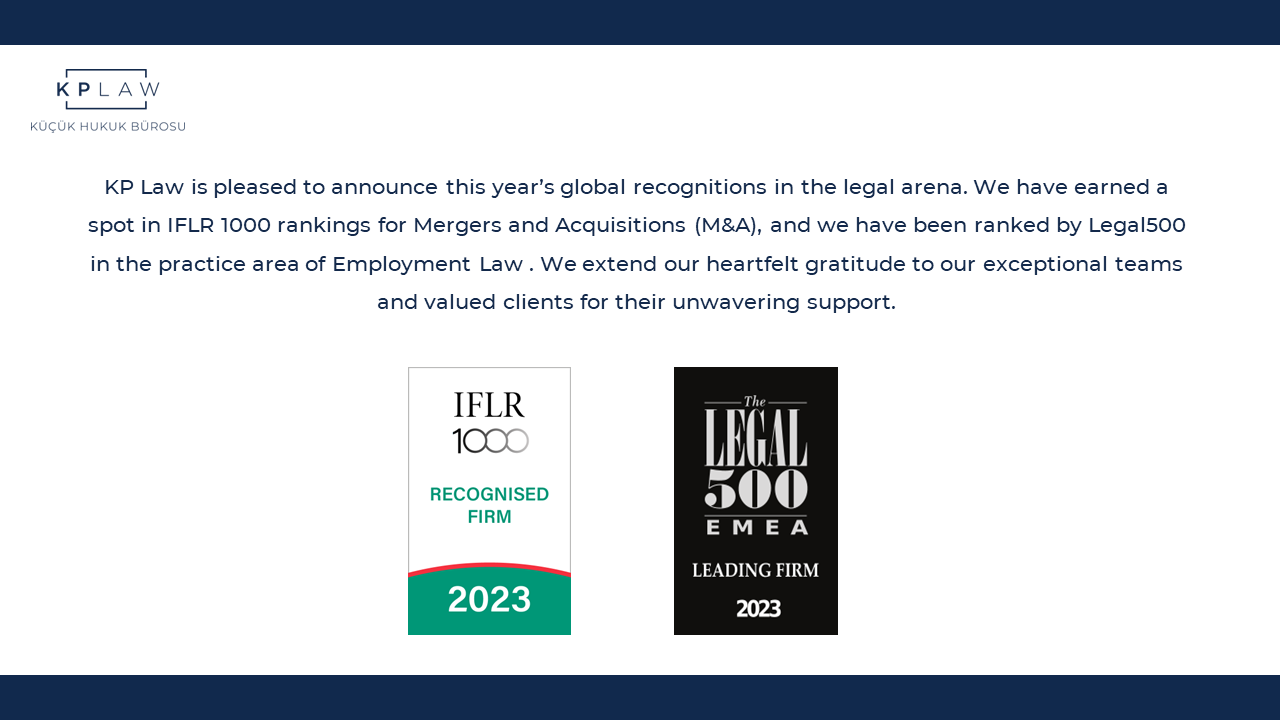News & Insights
The Constitutional Court Upholds Amendments to the "Electronic Commerce Law"

Alperen Koçalan | SENIOR ASSOCIATE
21.07.2023Amendment Law No. 7416 on the Regulation of Electronic Commerce was published in the Official Gazette in July 2022, and its gradual implementation was expected. Due to the significant changes it envisages for online marketplaces, service providers, and intermediary service providers, the law sparked serious debates, leading to an application to the Constitutional Court for the annulment of certain provisions of the relevant law, including "obligations of electronic commerce intermediary service providers" and "mandatory electronic commerce licensing." The Constitutional Court rejected the application for the annulment of these provisions. The reasoned decision of the Constitutional Court is expected to be published for further details.
As it will be recalled, the controversial regulation of the controversial law was also published in the Official Gazette in December 2022, with a gradual implementation plan, similar to the law, and an application was made to the Council of State for the annulment of the regulation. In a surprising move, the Council of State unanimously decided to suspend the implementation of 17 articles of the regulation. Accordingly, the articles whose implementation was suspended were as follows:
• Article 2/2 of the Regulation, which prohibits certain institutions operating within the scope of laws such as the Banking Law, Insurance Law, and Capital Markets Law from being considered as electronic commerce intermediary service providers and electronic commerce service providers.
• Regulations containing definitions related to (i) economic integrity, (ii) classifications of small, medium, and large platforms based on specific monetary thresholds for platforms and related to platforms, (iii) electronic commerce volume, (iv) classifications of small, medium, and large platforms based on specific monetary thresholds for sellers and related to sellers, (v) net transaction volume, and (vi) total sales revenue, specified in Article 4/1 of the Regulation.
• Article 6/3 of the Regulation, which includes details about the verification process that platforms need to carry out regarding sellers' identification information and the actions to be taken if such verification is not performed.
• The provision in Article 10 of the Regulation regarding the removal of unlawful content by platforms.
• Article 12 of the Regulation, which sets out the method to be followed when filing complaints against platforms in cases of intellectual and industrial property rights infringement, as well as the actions platforms need to take when evaluating these complaints. Article 13, which regulates the methods of application for sellers who wish to object to the complaints, and Article 14, which explains how the application will be concluded.
• Article 15 of the Regulation, which regulates the minimum elements that should be included in the intermediary service agreements to be signed between platforms and sellers.
• Article 16 of the Regulation, which regulates the rules and timeframes to be followed by platforms in case they modify the provisions of intermediary service agreements.
• Article 17 of the Regulation, which includes regulations on the circumstances under which platforms can restrict, suspend, or terminate their intermediary services, as well as the rules that platforms need to comply with in these matters.
• Article 19 of the Regulation, which states that platforms cannot sell their own goods bearing their own brands on their own marketplaces and that if such goods are sold on separate pages, there should be no access between these pages.
• Article 24 of the Regulation, which imposes the obligation on platforms that exceed certain thresholds to prepare an "compliance report" in accordance with the legislation every year, and which regulates the content of the relevant report.
• Article 25 of the Regulation, which imposes prohibitions on very large platforms, such as (i) providing services related to financial institutions within their economic integrity, (ii) facilitating the use of e-money issued by electronic money institutions within their economic integrity, and (iii) providing services without obtaining an e-money license through limited network exceptions under Law No. 6493.
• Article 26 of the Regulation, which imposes the restriction on very large platforms that they cannot provide postal and transportation services on platforms that do not belong to them.
• Furthermore, Article 27 of the Regulation, which is another restriction imposed only on very large platforms, which limits access between the pages where they publish goods and service advertisements on their own marketplaces and the pages where marketplace activities and advertisement activities are conducted.
• Article 28 of the Regulation, which imposes restrictions on advertising expenditures for large and very large platforms and provides detailed regulations on what constitutes advertising expenditures and how such expenditures should be made by the platforms.
• Article 29 of the Regulation, which imposes budget constraints on large and very large platforms regarding the discounts they can offer to buyers and sellers on the platform, and provides details on what should be included in this budget.
• Article 31 of the Regulation, which includes the requirement for intermediary service providers and sellers with certain net transaction volumes to obtain licenses, and regulates the procedures to be followed by intermediary service providers in the license application process and the calculation of the fees to be paid.
• Article 33 of the Regulation, titled "Miscellaneous Provisions," which regulates compliance periods, increases in monetary thresholds, and other related details.
So, what will happen now?
Following the Constitutional Court's decision to reject the request for the annulment of the law provisions, the final decision to be made by the Council of State regarding the regulation has gained great importance. The resolution of this uncertainty is eagerly awaited by industry stakeholders, as it will enable them to design their operations in accordance with the legislation.

